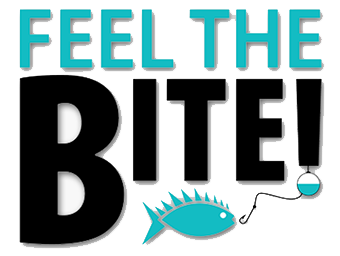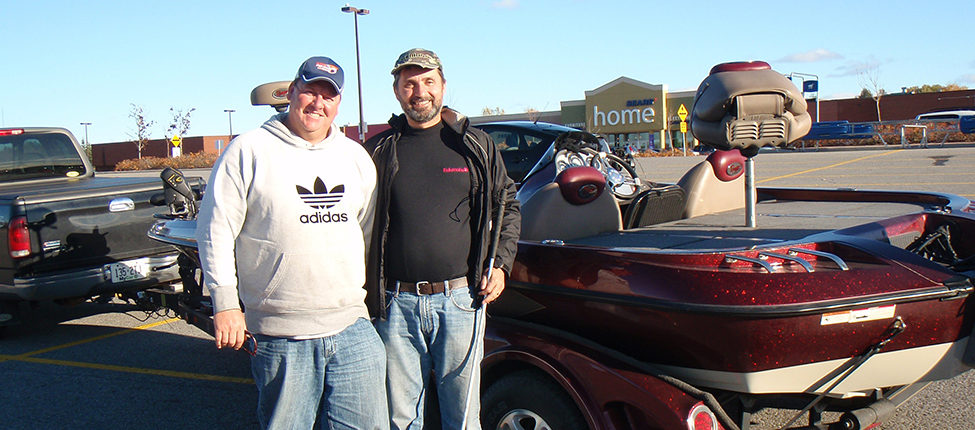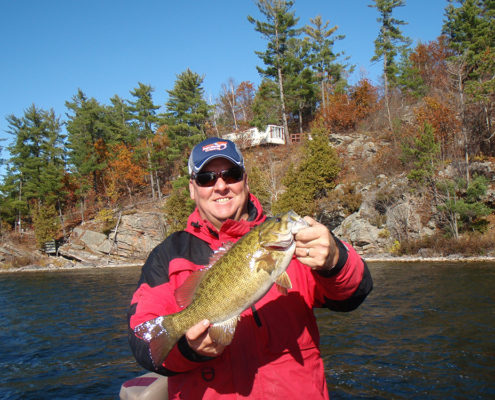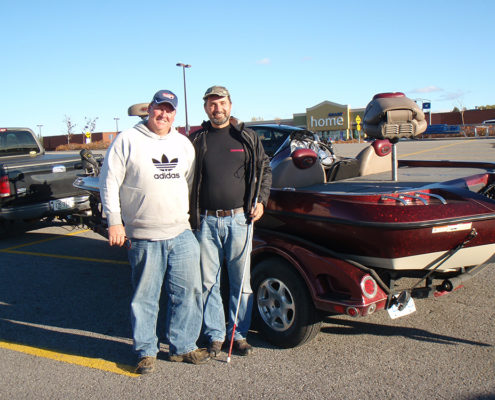Drop Shotting with Charles Sim
You would think that as a fisher with vision loss I would have already mastered drop shotting, a finesse technique that relies on the sense of touch. However, it was only recently that I acquired a proper drop shot outfit and fell in love with the technique, thanks in large part to sage advice passed on from Charles Sim, holder of the Canadian record for heaviest one-day limit of Bass (30.35lbs), and competitor in the 2009 FLW Tour and Bassmaster Northern Opens (http://www.charlessim.com).
Charles invited me to join him for a day of late-season fishing for Smallmouth Bass. Not thinking about the potential blow to my ego being so thoroughly schooled by such a pro might entail, I readily agreed. We were on the lake by 8 am and by 8:30 Charles had boated his 5th Smallie. Having caught nothing myself, the 20mph winds and 40oF temp, were combining to make me feel THE day might never end. Thankfully, Charles came to the rescue with a number of excellent tips, and it wasn’t long before I too began hooking up with some prize Smallies.
Charles and I were fishing parallel to cliff face with water depths below the boat of 40 feet plus. We cast within five feet of the cliff face and then worked our drop-shot rigs down the submerged rocks piled at the cliff’s base. The idea was to hop the weight down the rubble each time slack line was picked up to check for the tell-tale pressure of a fish. If pressure was detected, ample time was taken to carefully reel in slack line prior to setting the hook.
When drop shotting, there most often is no actual bite – it’s more of a pressure. To this end, having a rod with a very soft tip is important for sensing pressure on the end of the line without imparting a tug sensation to the fish. You need to give the fish a chance to engulf the entire bait and hook, and since the bait was moving only minimally when the fish first came into contact, it’s in no particular hurry.
The dual action of drop-shot rods serves multiple purposes. The soft tip assists in both detecting fish on the end of the line without their being spooked, and in preventing the fine wire hooks from being spat while fish are being played. The stiff backbone of the drop-shot rod allows the fisher to both set the hook once slack line has been carefully reeled in, and to control the fish boat-side. These rods truly possess dual personalities.
While we were first setting up, I asked Charles what style of hook he ties on when drop shotting. He prefers a size 2/0 fine wire worm hook in most cases, tied to the line using a Palomar knot. Charles said he witnessed on numerous occasions fellow fishers experiencing spat hooks at boat side, and in all instances the fishers were using hooks specifically designed for drop shotting called stand-out hooks. These hooks possess two eyes, one to tie the line to, and the second to run the tag end of the line through, to which the weight is ultimately attached.
Having brought with me, of course, drop-shot hooks, I set Charles’s wisdom aside and tied on my stand-out hook. The 5th fish I tied into turned out to be quite the lunker. Unfortunately, we were only ever able to estimate its weight at around 4.5lbs as just prior to slipping this beauty into the net, it spat my stand-out hook as effortlessly as baseball players spit tobacco. I ultimately paid for my arrogance with countless reminders from Charles over the next several hours. I did manage to partially redeem myself by boating a 3lb, 14oz Smallie, and in total, lost only the one fish and boated nine.
The next error in my drop-shotting technique that Charles corrected concerned the distance between my hook and weight. The distance should be at least 12 inches, and preferably as much as 18. When fishing in locations where fish are suspended above the bottom or to get your bait above the weeds, one can increase the distance even more. However, fishing with less than 12 inches between the hook and sinker is not advisable as fish are more likely to sense pressure from the weight when mouthing the bait and spit the bait.
Another pearl of wisdom Charles imparted concerned line tension. Naturally, I was fishing from the rear casting deck of Charles’s Ranger, and Charles was slowly moving the boat forward with his ELECTRIC TROLLING MOTOR. This meant I often found myself fishing behind the boat. Drop shotting works best when the line between the rod and the weight is semi-slack, something that isn’t possible when one’s line is being dragged behind the boat. Charles suggested that any more than 45 degrees behind the boat is too much, and that I should always cast about 33 degrees towards the bow.
Charles uses 8lb fluorocarbon line when drop shotting. Fluoro is invisible under water and has minimal stretch allowing for greater sensitivity to the fisher. I used 20lb Power Pro braided line, which has zero stretch, and a 6-foot 10lb fluoro leader tied on using a double Uni Knot. Both set-ups have their advantages and disadvantages. Straight fluoro eliminates the need to tie on leaders, but the line itself is stiffer than both mono and braid and can present the fisher with some line management issues if line isn’t reeled in under pressure. Braid on the other hand is easier to manage on the spool, but is more visible to fish making fluoro or mono leaders a must when fishing clearer water.
I brought a selection of different sized split shots, but no matter how hard I pinched the weights on the tag end of my line, they were no match for the craggy rock cover we were fishing over. Charles convinced me of the value of drop-shot weights. These weights differ in that they possess a special swivel/line gripper that holds to the line without crimping or tying. I personally found these weights somewhat challenging to install using my usual method of guiding the line with my tongue, but later experimentation found that needle threaders address my issue nicely.
With respect to weight size, Charles recommends using the least amount of weight needed to efficiently lower your bait to the bottom without being so heavy that it’s prone to snag. Also, the smaller the weight the less likely fish will feel pressure causing them to spit the bait. Charles does recommend going to a heavier weight (1/2oz) when fishing post-spawn Bass to allow the bait to be worked thoroughly without inadvertently pulling it away from the target. Drop shot weights range all the way from 1/8 up to 1oz, but the more common weights are ¼, 3/8 and ½ oz.
Charles Sim is no doubt a great fisher, something I had the pleasure of witnessing first hand. He’s also a very patient fishing coach. Charles had never fished with someone without sight before, so preliminary information was shared ahead of time to address some of the more basic questions (www.BlindFishingBoat.com). Charles expressed surprise about my ability to consistently place my casts close in to the cliff face, and when it came time to load the Ranger, Charles never thought twice about my pitching in by driving the truck up the ramp after he positioned the boat on the trailer. I invited Charles to join me next time on the Blind Fishing Boat – blind folded (LOL).






